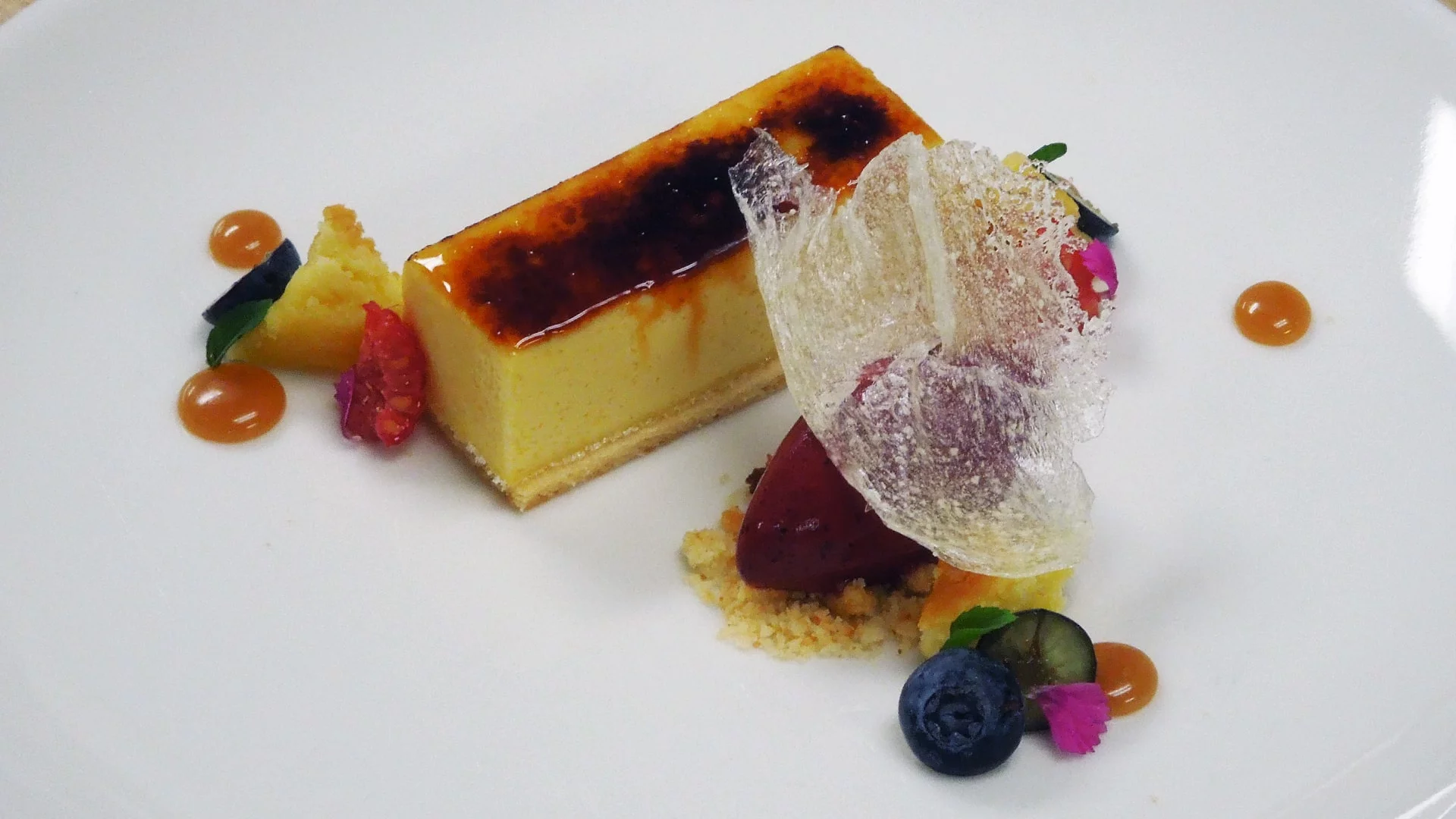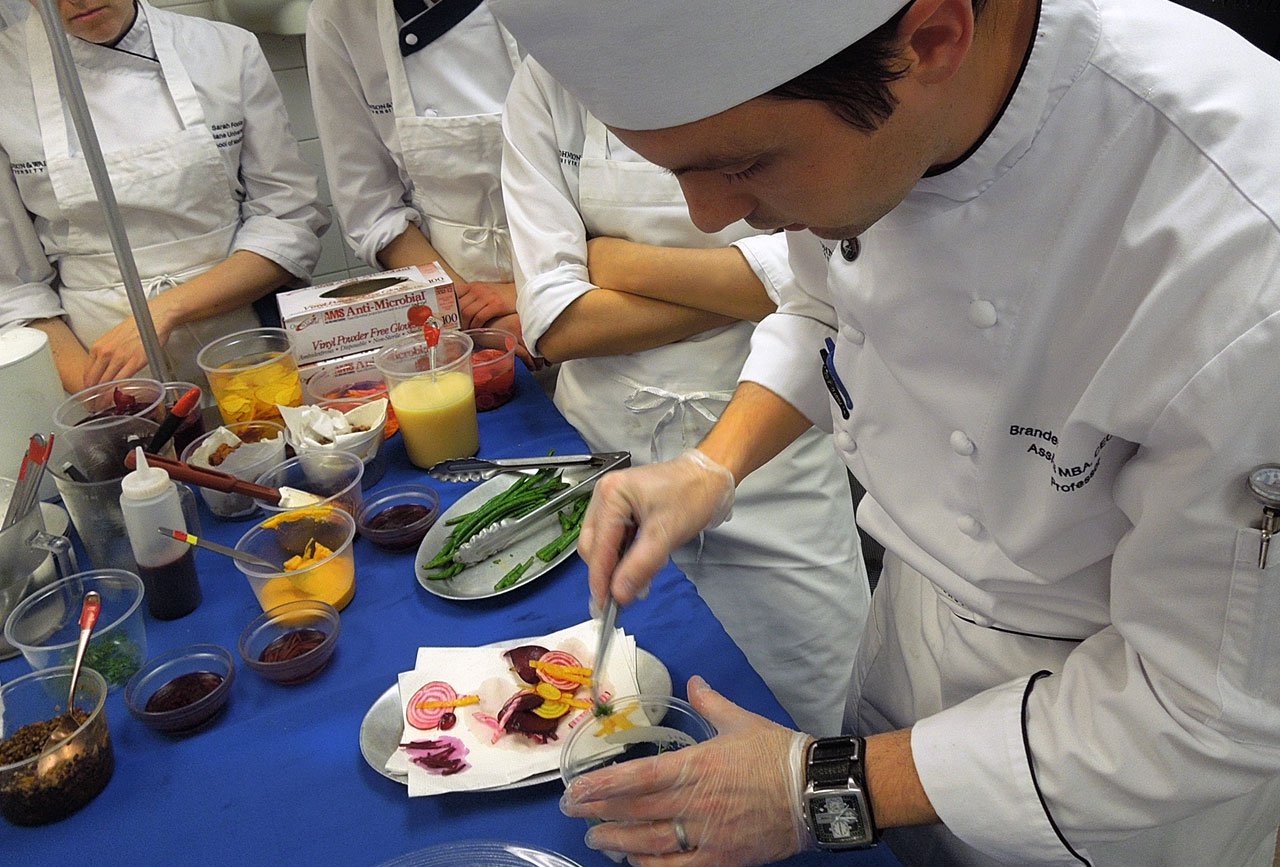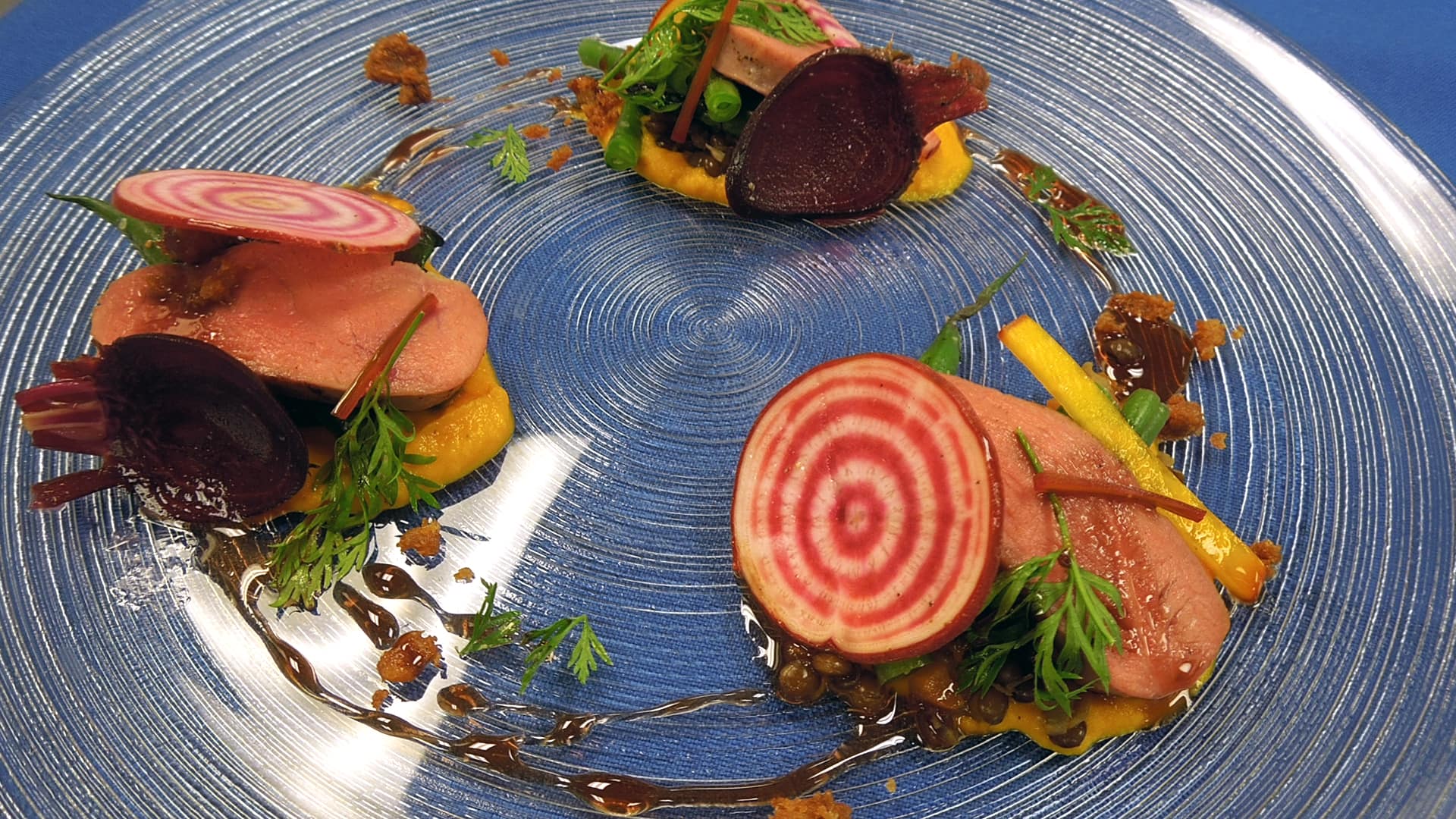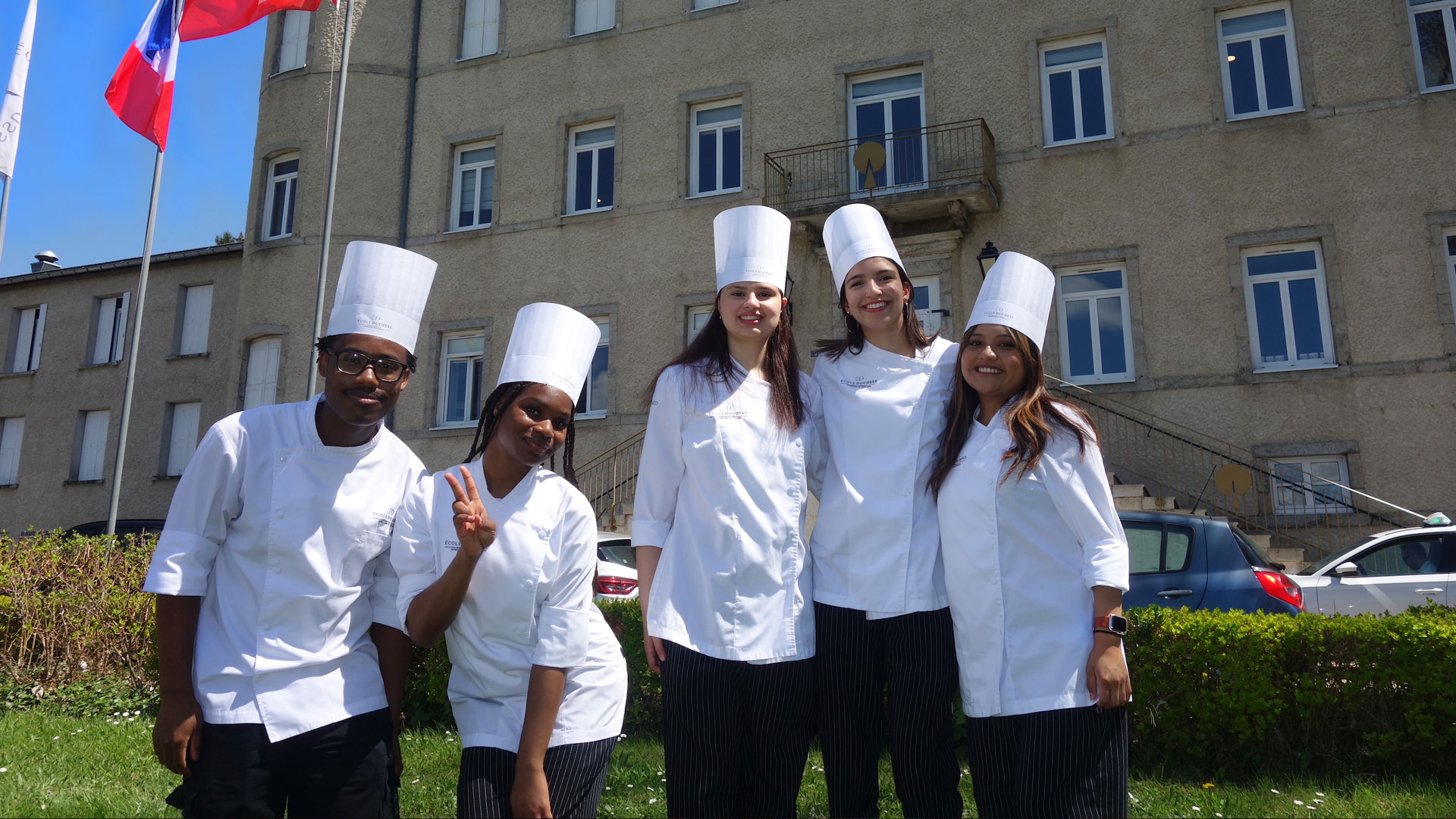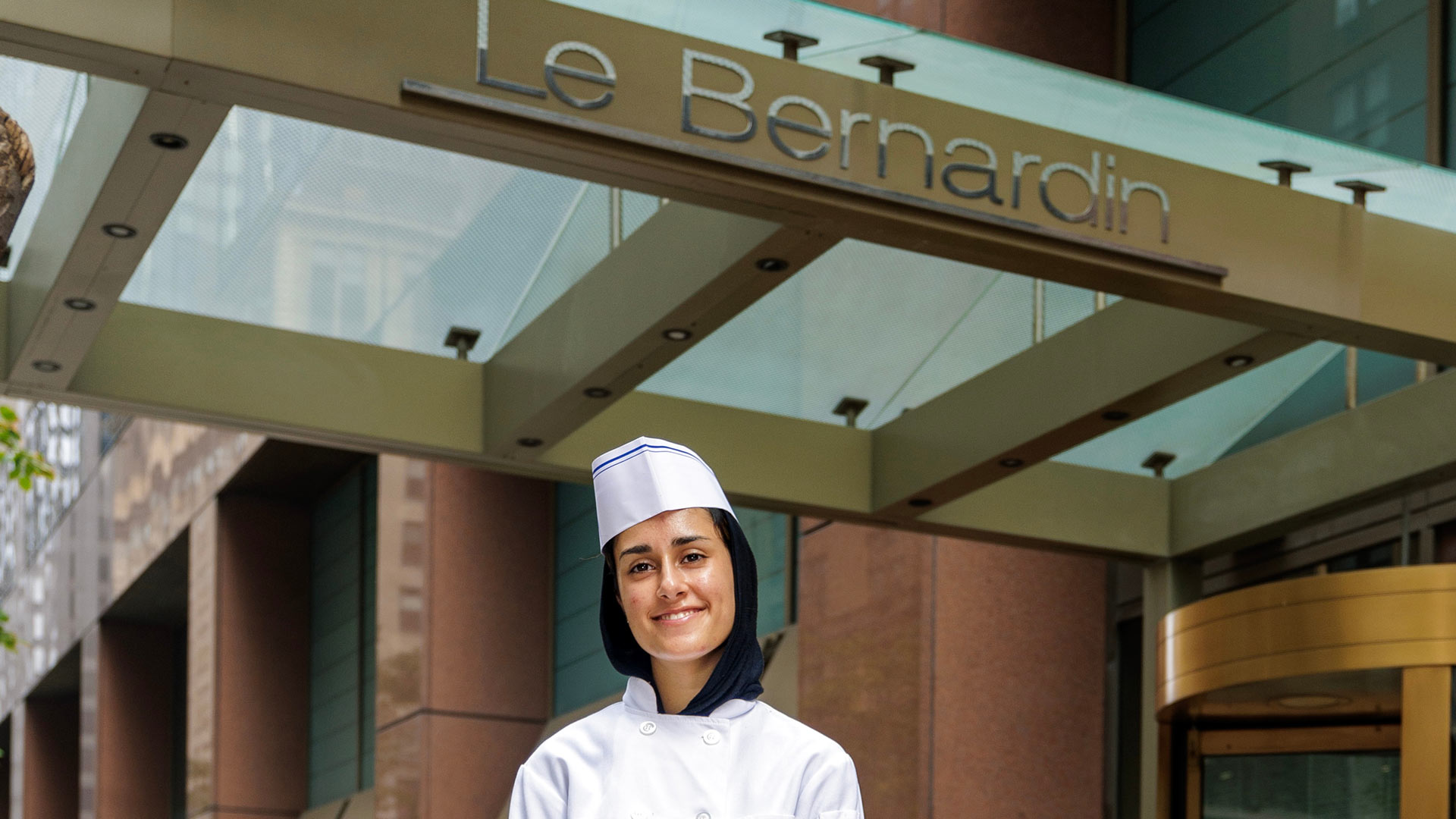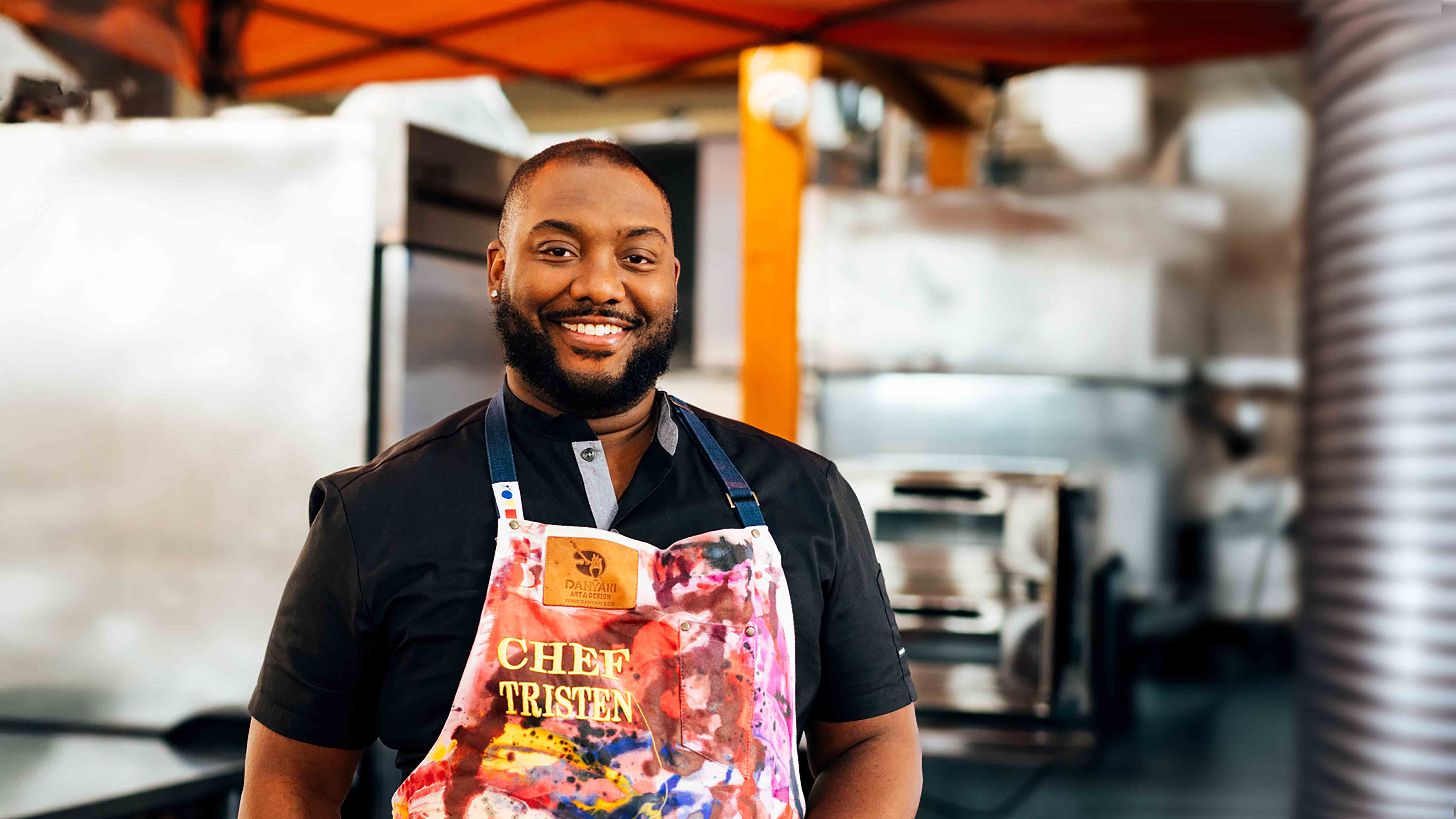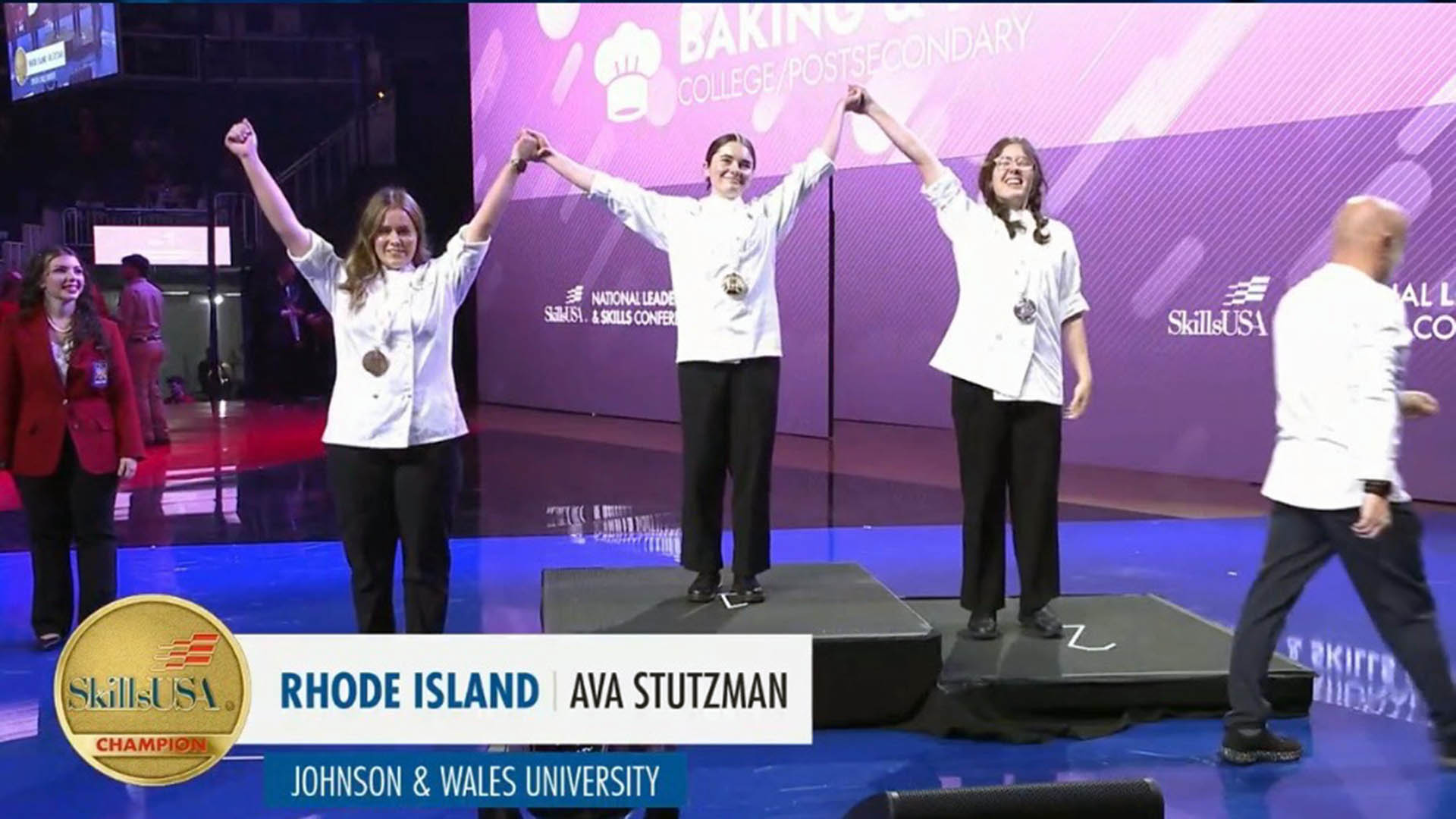Plating 101: Contrast and Balance in Food Presentation
November 2020 Update: Learning to trust your own instincts and eye is a crucial aspect of developing plating expertise. This post has been updated to include both savory (Culinary Arts) and sweet (Baking & Pastry Arts), with JWU Providence chefs Branden Lewis '04, '06 MBA, CEC, and Jaime Davis Schick '07, ’19 M.Ed., CEPC, weighing in on the exacting but fun art of making beautiful and balanced plates.
The art of plating is all about contrast and the balancing of multiple elements on a single plate. When Chef Lewis teaches plating and presentation to Culinary Arts students in the College of Food Innovation & Technology, he emphasizes 4 key concepts:
- Flavor and Texture: Contrasting textures and flavors also help avoid tasting boredom. You want diners to anticipate every bite, and engineering the plate in such a way that complementary textures and flavors enliven each bite ensures that element of surprise.
- Color: Think of how bored you’d be if you were faced with a totally beige plate. Vibrant and contrasting colors naturally attract. We eat first with our eyes and the rest of our senses follow.
- Complexity: The complexity of your plate should suit your restaurants clientele. There are many different levels of formality — and plating to match!
- Symmetry and asymmetry: Think about the negative space on the plate as much as the positive space (i.e., where the food sits). Guide food into place, and don’t try too hard — you want things to look naturally artful, but not overdone.
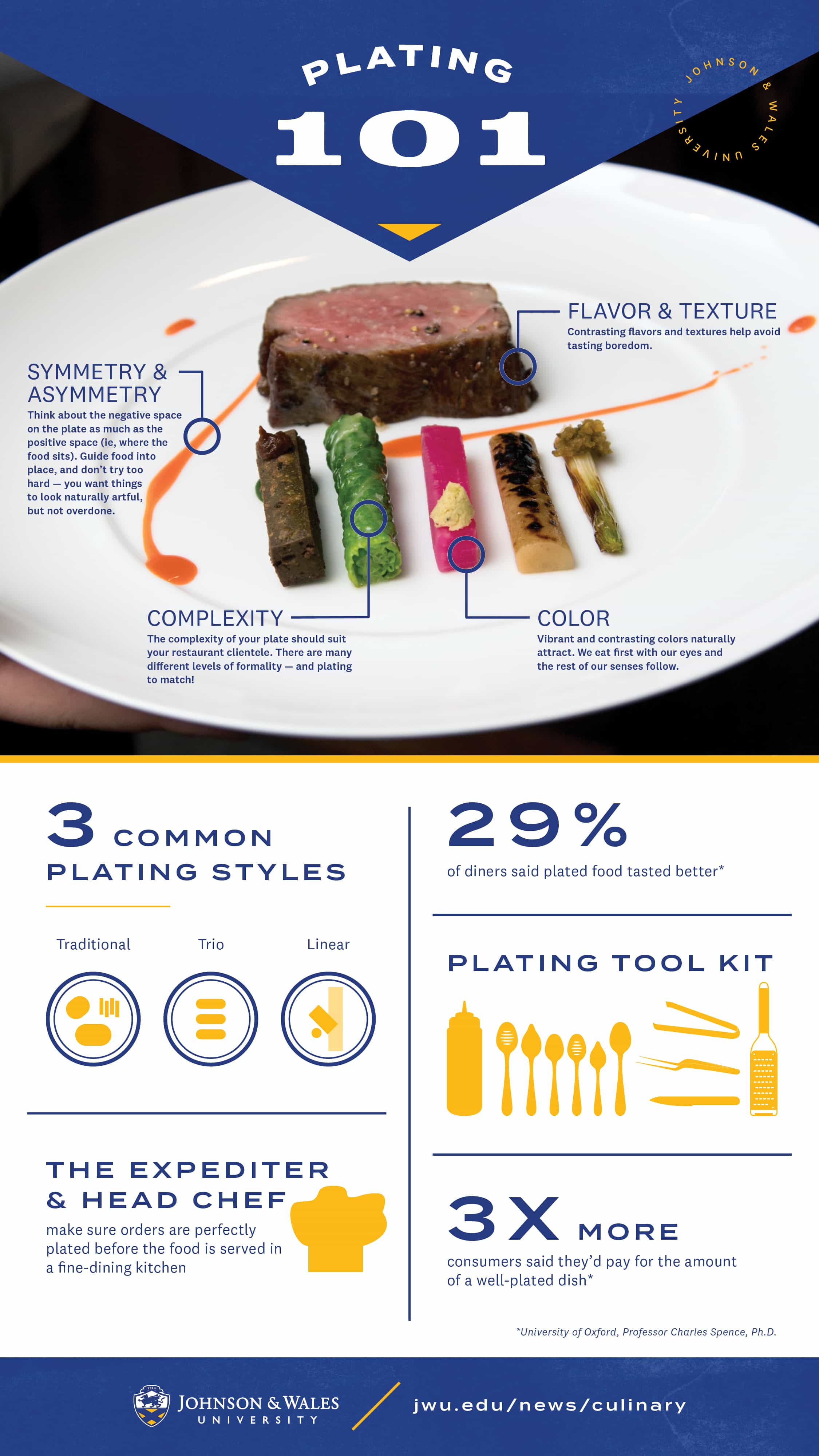
On the dessert side, Chef Schick has a few rules to live by — but she is quick to remind students that rules are made to be broken. The overall goal when plating is to please the customer’s eye and palate, which means that every decision about flavors, colors and textures should support that goal.
- Balance unorthodox flavors with accessible ones. Don’t be afraid of “wild card” flavors that brings something unexpected to the plate. For example, Schick plates a jalapeño doughnut with milk chocolate cremeux, coconut ice cream, mango sorbet and mango ribbons. The mango adds color and a pop of bright fruit flavor, plus it cuts through the richness of the chocolate and ice cream.
- Odd numbers are best. “Think of creating lines that your eye can follow. Odd numbers are the rules I live by!” When the central elements on your plate are geometric — for example, a rectangular crème brûlée or perfectly round doughnut — it frees you to play with asymmetry in the actual plating.
- Deploy fruit like little pops of bright flavor. Schick’s fruit elements are deployed with precision, and always to balance out rich and/or savory elements: “I always cut blueberries and raspberries in half — not only does it reduce bulk on the plate and make a more interesting shape, but it’s a more pleasant bite.”
- Got scraps? Use (and re-use) ‘em! There’s no room for food waste in Schick’s world. Her miso dessert features a shortbread base made of miso, vanilla, butter, cake flour and almond flour. Any leftovers can be pulsed in a food processor to make miso sand to use as a textural element. She’s all about finding a use for everything — it just takes a little creativity.
Three Food Plating Styles
In addition to the basic elements of food plating, there are also styles to consider.- TRADITIONAL: Think family dinner: veggies at 2 o’clock, main at 6 o’clock and starch at 10 o’clock.
- TRIO: Quite popular, especially in small plate/tapas restaurants.
- LINEAR AND CONTROLLED RANDOMIZATION: Where your food aligns to an imaginary grid line or curve, with some of the food artfully breaking out of the grid at seemingly random intervals.
Plating styles are influenced by current trends in cuisine and culture. There are countless plating styles in use today, and luckily, social media allows us to see a dish someone is eating in Spain, for example, almost simultaneously. That kind of unprecedented access means that you can track food trends and styles in real time.
It’s important for students to find their own favorites through trial and error. Chef Lewis recommended students start by mapping out their plates ahead of time while they built up a stronger comfort level with plating. It takes serious focus and practice to create or define your own plating style. (But it can be done!)
Explore more of Chef Schick’s dessert plating philsophy. Follow Chef Lewis, Chef Schick and Advanced Pastry on Instagram; Advanced Pastry is curated by Chef Schick and showcases the incredible work of our advanced students!
DISHES FROM CHEF SCHICK (TOP) AND CHEF LEWIS (BOTTOM).
